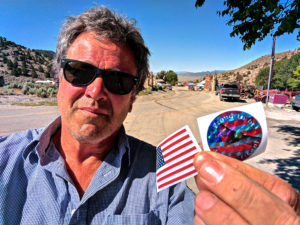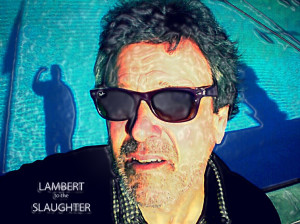 We should be able to agree that the entire police culture is on trial in Minneapolis these days, and not just Mohamed Noor. With every passing day of trial testimony the natural reaction — certainly from me — is greater and greater infuriation.
We should be able to agree that the entire police culture is on trial in Minneapolis these days, and not just Mohamed Noor. With every passing day of trial testimony the natural reaction — certainly from me — is greater and greater infuriation.
Few incidents put “the blue wall of silence” and the truly horrifying inadequacy of police hiring and training in starker relief than the killing of Justine Damond and the “professional response” by Minneapolis police in the minutes and months afterward.
As we’ve learned through the first weeks, the two cops immediately involved, Matthew Harrity and Noor, ignored police procedure about body cameras, as did virtually every other cop who arrived on the scene, turning them on and off as they saw fit. Likewise, we’ve learned that contrary to the original, long-standing police version of the event, the alley in which Damond was killed wasn’t pitch dark, but so well illuminated by street lighting that the next wave of arriving cops could plainly see her lying dead on the ground as well as the surrounding area.
Then there’s the “startling” slam on the police car that so terrified Noor he fired at the first shape he saw outside Harrity’s window. We now learn that the slam on the car was something that only churned up into the story days after the event, by which time the whole case was pretty much in lockdown by “the blue wall”, with Noor refusing to explain himself and other officers forced to give testimony by a grand jury.
The credibility of police in a civilized society is a pretty damned important matter, and here in Minneapolis, and all over the USA, that credibility continues to take a ferocious beating. Why? Because tech advances and social media are more and more able to transmit real-time evidence of actual police behavior. The taxpaying public can now see — fully, as in the case of Philando Castile, and intermittently in the Damond case — how more or less average cops go about their daily business. And, frankly, it’s terrifying.
When the Noor trial started it was estimated at a straight-up 50-50 call on his guilt. I doubt that has changed. Noor’s Somali ethnicity may play a role in this case that the Hispanic ethnicity of officer Jeronimo Yanez didn’t in the Castile case. But it’s likely that typical jury respect for anything with a badge will again be a powerful counter-balance to the appalling behavior of Harrity, Noor and so many other cops on the scene in quiet, leafy southwest Minneapolis that fateful night.
I mean, FFS, what goes through a trained cop’s mind when they can’t bring themselves to tell the arriving EMT crew what actually happened?
Clearly, a lot of rethinking of the basic cop code has to be done to relieve public concerns that too many of these people are poorly vetted, ill-trained, demonstrably terrified individuals playing out a bizarre kind of military adventure on city streets, with themselves as executioners routinely exempt from punishment.
What to do?
1: Offer significantly better compensation to attract a much higher quality of police candidates. Give communities a true choice in the quality of people they’re (arming) and putting on the streets, rather than forcing cities to pretty much take (and keep) whoever walks in the door.
2: Vet out the most militaristic “Bulletproof Warrior” crowd, the people itching for the authority a badge and a gun gives them. Don’t try to adapt them to police procedure, simply red-line them at the get-go.
3: Never, ever, allow two newbie cops in the same car on the same beat. Neither Harrity or Noor had the emotional stability or experience to deal with Damond situation, and that’s with the reminder that they supposedly “feared for an ambush” in southwest [bleeping] Minneapolis, a neighborhood with one of the lowest violent crime rates in the country.
4: Multi-projectile police revolvers. Service weapons with two separate loads of ammunition. The default position being either rubber bullets or chemical darts. If cops are responding to a Hollywood-style shoot-out they can switch their weapons over to the real thing. (Harrity and Noor had a military-style rifle in their car.) In the meantime, given the horrifying tally of citizens executed by inexperienced cops “fearing for their lives”, a rubber bullet fired in terror at a nice lady in her pajamas would have a much different ending than … her being dead on the spot.
5: A fresh re-writing of the city’s police standards and legal consequences. As in:
a: fail to turn your body camera on when responding to a possible crime — you’re fired.
b: fail to fully describe the events of a shooting to arriving back-up, EMT and supervisors — you’re fired.
c: “decline” to give any statement or testimony to police or state investigators after a police-involved shooting — you’re fired. Likewise, counsel an officer involved in a shooting incident not to speak to investigators — you’re fired.
In a fair world, where as Randy Newman said, “It’s money that matters”, a massive, eight-figure pay-out to the Damond family for the actions of Noor and the Minneapolis police might get the gears turning on some of these reforms.
Not that I’m betting on it.

 While no more outrageous and appalling than the police killing of Philando Castile and the nearly
While no more outrageous and appalling than the police killing of Philando Castile and the nearly